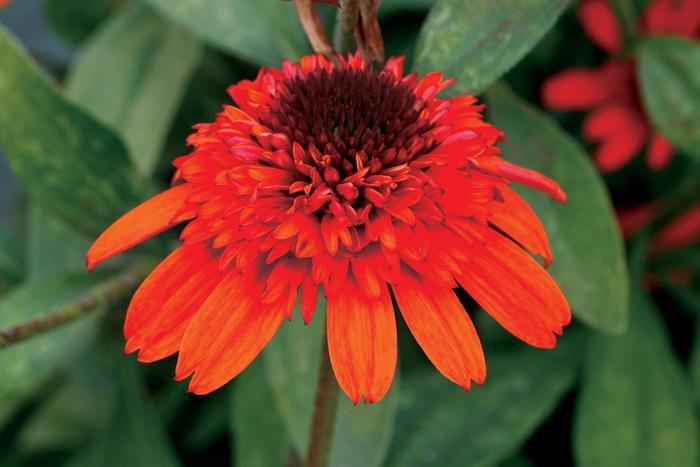



Plant Calculator
Enter the approximate length and width of the area you will be planting and click 'Calculate' to determine how many Echinacea 'Moab Sunset' you will need.
*Correct and successful spacing is complex and depends on project conditions.
Echinacea 'Moab Sunset'
Coneflower
- Large, double orange flowers
- Long lasting flowers
- Compact, upright habit
- Ideal for borders or containers
- Category: Perennials
- Hardiness Zone: 4-9
- Height: 12-20 in
- Spread: 12-15 in
Currently Unavailable
Substitutions available for Echinacea 'Moab Sunset'
Exposure
| • | Full Sun |
Foliage Color
| • | Green |
Soil Moisture
| • | Average Water |
Attributes
| • | Border or Bed |
| • | Container |
| • | Cut Flower/Foliage |
| • | Drought Tolerant |
| • | Mass Planting |
| • | No Deadheading |
Habit
| • | Upright |
Growing & Maintenance Tips for Echinacea 'Moab Sunset'
All echinacea are perennials and native to the American prairie. To produce plants from seed that will flower the first year, sow seed no later than January 25, regardless of location. Sow seed on top of germination media that has been thoroughly wet and allowed to drain. Seed can be exposed to light or covered lightly with media. Maintain 65F to 70F soil media for 10 to 15 days, the length of time for germination. Seedlings can be transplanted into larger containers within 20 to 28 days. Transplant into a full-sun garden location with amended soil that is well draining. Plants thrive with few disease or insect problems.
General Growing Tips for Echinacea purperea
Easily grown in average, dry to medium, well-drained soil in full sun to part shade. Best in full sun. An adaptable plant that is tolerant of drought, heat, humidity and poor soil. Divide clumps when they become overcrowded (about every 4 years).
Learn More about Echinacea purperea (Coneflower)
Echinacea purpurea, commonly called purple coneflower, is a coarse, rough-hairy, herbaceous perennial that is native to moist prairies, meadows and open woods of the central to southeastern United States.
View All Echinacea purpereaInteresting Notes about Echinacea purperea
Genus name of Echinacea comes from the Greek word echinos meaning hedgehog or sea-urchin in reference to the spiny center cone found on most flowers in the genus.












